
“Tell me and I forget. Teach me and I remember. Involve me and I learn.”
– Benjamin Franklin
When EPCOT Center opened at Walt Disney World in 1982, it was not just a glimpse into the future or a day in the international life. It was a living, breathing World’s Fair meant to build connections. Connections between topics, between people, and between the two. Each of Future World’s eight pavilions was dedicated to a singular scientific or cultural pursuit: communication, energy, the seas, land, imagination, and transportation.
And let’s face it: the best way to learn is to not realize you’re learning until it’s too late. You can read a textbook on fossil fuels, but Ellen’s Energy Adventure succeeds where words fail. Sustainable ecology. Sure. Greenhouses. Yep. But sail through them aboard Living With The Land and suddenly it makes sense; it connects. What better way to understand transportation than to design your own conceptual car and put it through the paces on Test Track?
Disney fans would find something magnificent to celebrate in COSI, the incredible Center of Science and Industry located in Columbus, Ohio (just a day trip away from Cedar Point or Kings Island). Why would we interrupt your regularly scheduled amusement park programming for a science center? Trust us, and read on…
History
COSI was originally a small town children’s museum nestled into downtown Columbus. In 1999, a very intentional push was made to transform COSI into an international, world-class science center on par with Berlin or Tokyo’s best.
A brand spanking new, 320,000 square foot architectural marvel constructed by famed artist and architect Arata Isozaki was built along a bend in Columbus’ Scioto River. The “blimp hangar” shaped building is made up of 159 curved concrete panels – an Epcot-esque, towering architectural wonder that certainly echoes of futurism.
Brilliantly, the millennial facility was constructed around the shuttered Central High School, a sincerely regal public school that was built in 1924. When viewed from downtown, the classical 1920s exterior disguises the museum. That’s no accident – Isozaki intended for the museum to be a reverent representation of the past on one side, and progressively futuristic on the other.
Interestingly, the carved motto on the school's stone exterior rings true in its newest incarnation, too: "Know thyself. Knowledge is power."
Inside
You enter COSI under the golden cylinder at the building’s center and step into an open, four-story atrium, bright white and lit by a ceiling of skylights. There's also an almost iconic four-story glass tower with a glass elevator inside, revealing the inner workings of a surprisingly complex system. This central Atrium also serves as the stage for two renowned shows: a classic display of the hair-raising power of an Electrostatic Generator, and a community favorite: Rat Basketball performed by two very real Japanese black hooded rats displaying the powers of positive reinforcement and operant conditioning at work.
Kinetic motion abounds in this open entry as two levels of bridges criss-cross overhead, but the most noticable element has to be COSI's iconic Highwire Unicycle overhead, where young and old alike can ride across the tightrope - no hands! The Highwire Unicycle is the only one in North America. The science behind it? A massive 350 pound counterweight hangs below the unicycle, ensuring that its center of gravity is always well beneath the wire, keeping riders upright.
But the reason COSI represents an evolution of the EPCOT model lies deeper inside of the building. COSI is not your grandfather’s science center. Forget wide-open floorplans of typical science experiments...
COSI borrows from Epcot’s brilliant "pavilion" style with seven massive, self-contained, immersively themed atriums, each dedicated to a particular topic that makes up a piece of "Science." In other words, imagine "science" – this larger than life concept – divided into seven smaller pieces almost like a pie chart. Give each of those pieces their own totally immersive, hands-on world themed to Disney-quality and you'll start to get the picture.
Like Epcot's pavilions, each of these seven fragments of science is given its own themed atrium along the length of the “blimp” layout. From that central Atrium entry, two long, narrow, white hallways branch off to the left and right. The understated halls – part of Isozaki’s art – betray the incredible themed atriums within.
So step inside and together let’s check out the seven themed exhibit spaces of COSI. For the first, we’d suggest you hold your breath…
1. Ocean
Walking along the narrow, sunlit, white hallway of the museum, you suddenly encounter something unusual… a shipwreck bursting through the white plaster. This is the entrance to Ocean, the magnificent, Epcot-style exhibit that celebrates the study and mythology of water.
Guests step into the shipwreck and find themselves in an underwater cavern. The path forks left and right. Turning right, you see the docked research submarine the DMS Poseidon.
The Poseidon is a docked undersea research laboratory built around a decaying shipwreck. This underwater laboratory is filled with hands-on experiments that document the reality of ocean exploration: pressure, SCUBA technology, remote controlled sea rovers, ocean floor mapping, and more. Guests can explore the many capsules of the sub and try their hands in the sub’s laboratory, Lily Pad. The idea is that this half of the Ocean exhibit presents the scientific study of our planet's oceans. The real, gritty, technological side of oceanic study.
But the realities of the seas only tell half the story. Very intentionally, Ocean has another half, too. If you return to the undersea cavern entrance and instead follow the forked path to the left, you'll stumble on an entirely different view of the ocean, though no less important. Leaving behind the scientific exploration of the docked research submarine, you'll instead enter into the Temple of Poseidon.
This half of Ocean explores the fantasy of water – the magnificent things it can do, how it feels, what it sounds like, and the stories we tell about it… It’s here under the watchful gaze of Poseidon and his golden halo that you can balance balls on water jets, touch water bells, control whirlpools, listen to ocean sounds, explore erosion by building in sand against the flow of waterfalls, and aim laminar flow jets at Poseidon himself. While the submarine exhibits chronicle the realities of the sea, the Temple of Poseidon is all about the mythical and emotional connection we have to water.
And as in the real ocean, the temperment of the seas are reflected in Poseidon's mood. For a time, the Temple is cast in a hazy, calm, ethereal blue to the tune of uplifting songs of the sea. But once in a while, the lights dim as Poseidon is dramatically lit from beneath by a single red light... The waves build up pressure as the music swells and the incredible force of the seas is made clear.
We know very well that the Ocean is a piece of a science; a sliver of the "science" pie chart. But it's not alone. Exit from the shipwreck and proceed down the long, white hallway of the "blimp" until you stumble upon another opening in the wall and enter an entirely different realm.
2. Energy
What is energy, and how do we use (and misuse) it every day? As soon as you step into COSI’s Energy exhibit, you select an avatar character that will follow you through the exhibit. Then, you follow lighted tracks in the ceiling to three themed zones within: the Product Zone (green), the Home Zone (red), and the Transportation Zone (blue).
In each zone, guests do a bit of exploring before plugging in their avatar and making choices based on their character’s backstory, all in an attempt to balance energy effectiveness with a dwindling pocket book. In the Home Zone, you can explore the living room, laundry room, and kitchen to learn about and identify “Energy Vampires” – household items that use power even when not in use. The Product Zone is the same, as guests learn to minimize their impact on the environment and the power grid. (Did you know that 85% of milk's carbon footprint is thanks to a cow's life on the farm?)
Finally, the Transportation Zone challenges you to “fill up” with five kinds of fuel –gasoline, hydrogen, natural gas, electricity, and ethanol – to see which propels the car furthest on a $25 budget. You can also race simulated cars and measure the efficiency of biking, walking, and carpooling versus driving alone.
The idea is that by the end of exploring Energy, you'll understand that energy conservation isn't as easy as we make it seem. As you make choices in each of the zones for your avatar, you'll watch your energy savings fluctuate... but so will your pocketbook. Simple choices can make a difference.
Most anyone could name Oceans and Energy as major components of science and important areas of scientific study... But science is made up of more than that... Continue up the stairs to Level 2...
3. Gadgets
Simple machines, physics, electricity, force and motion... These larger-than-life ideas are just as important in science as the study of the ocean or energy, and thus they get their own immersive exhibit with a fitting name to connect them all: Gadgets!
Take all the "stuff" you'd find at most science museums – lasers, balls balancing on air streams, plasma globes, chaotic pendulums, cogs, pulleys, pistons, transmissions, circuits, light bulbs, and more – and you'll understand the meat of Gadgets.
The idea? Science can be loud. In this exhibit, you can send fans soaring, build with gigantic, limitless blue foam blocks, explore LEDs, test magnetism, and become pistons in a giant engine. How many pulleys does it take to comfortably lift your own body weight? This is the place to find out.
Maybe coolest of all is an engineering challenge area stocked with simple materials (cups, string, rubber bands, pipe cleaners, etc) challenging you to make something that can float in an eight-foot-tall standing wind-tube. It's a playground of engineering, designing, building, testing, and redesigning.
For theme park fans, you'll also notice a cameo appearance by a famously complex ride system. Just at the exhibit's entrance stands a pair of hard-working robotic arms that can build, solve puzzles, and even dance. Replace the arm's black "hand" with four humans, place the arm on a track, and you've got the ride system for a very famous Wizarding World attraction.
The Gadgets Stage – decked out in cogs and gears to match the exhibit itself – is home to a wild explosion show that displays the unimaginable powers of chemistry.
But probably coolest of all is the Gadgets Café, where scientists of all ages can have a seat, grab a menu of Appetizer, Entree, and Dessert experiments and test until their hearts' content. Make slime, pop bottle rockets, send aluminum foil ships sailing... The Gadgets Cafe even offers a "take-apart" menu for engineers-in-training where you can disassemble real computers, printers, and clocks to see what makes them tick. It doesn't get more hands-on than that.

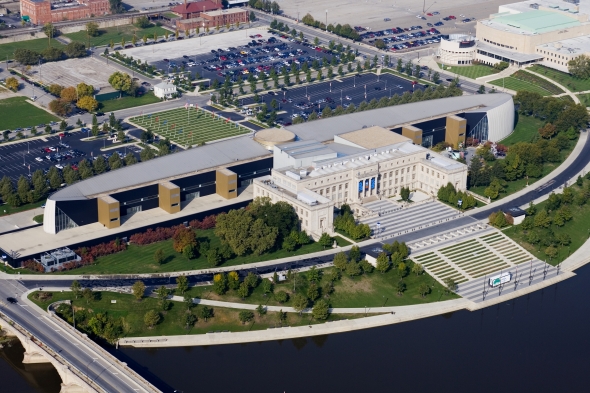
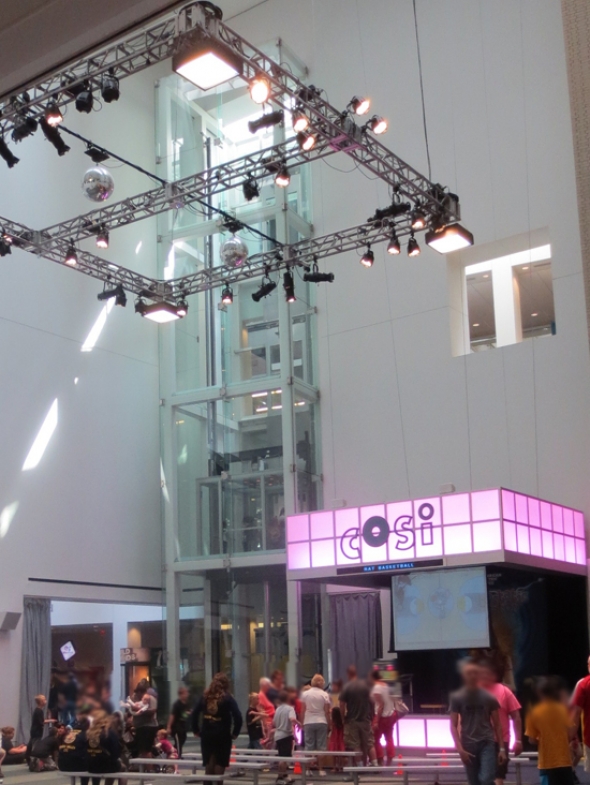
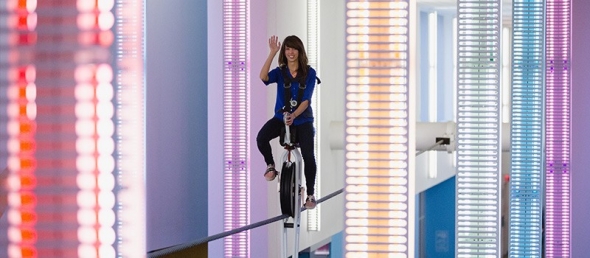
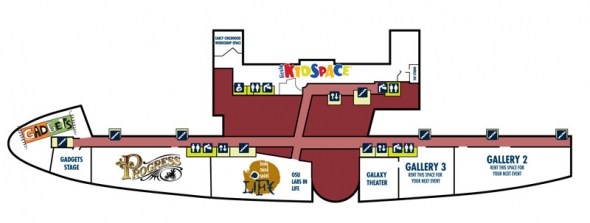
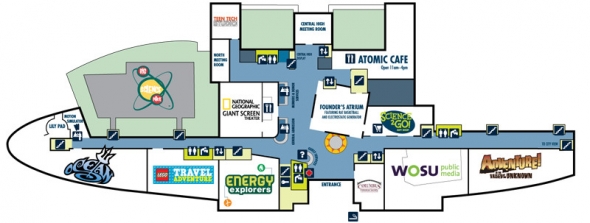
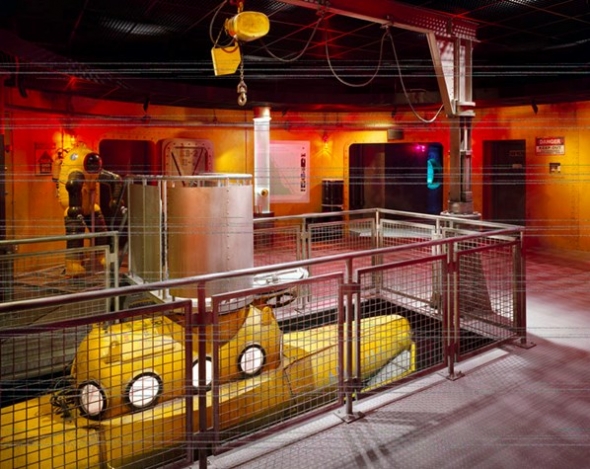
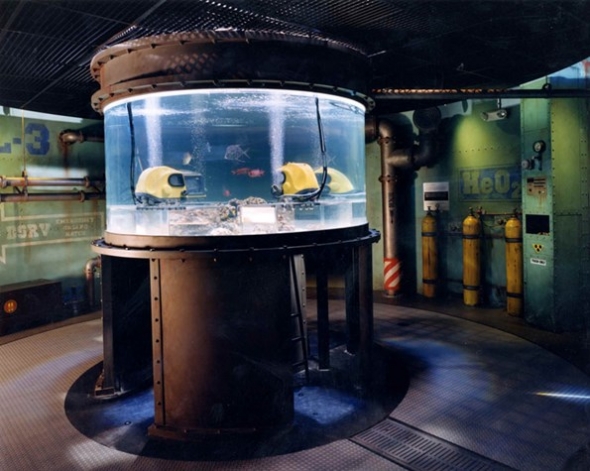
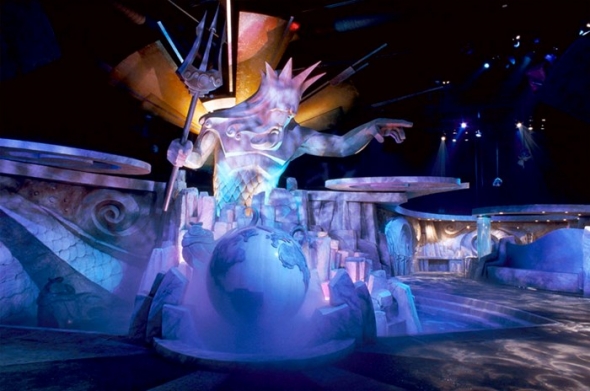
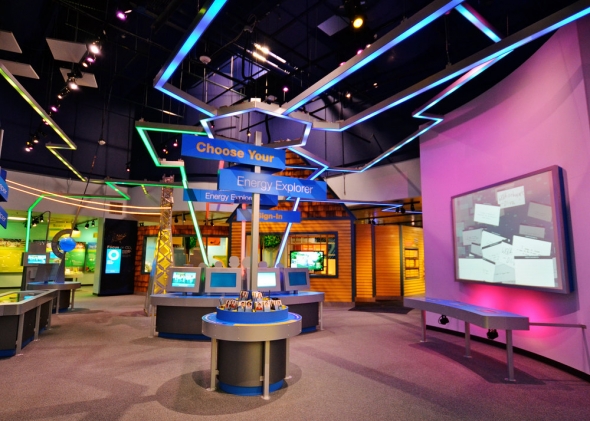
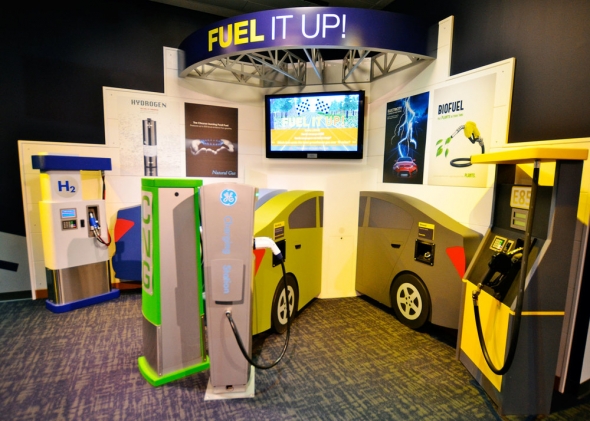
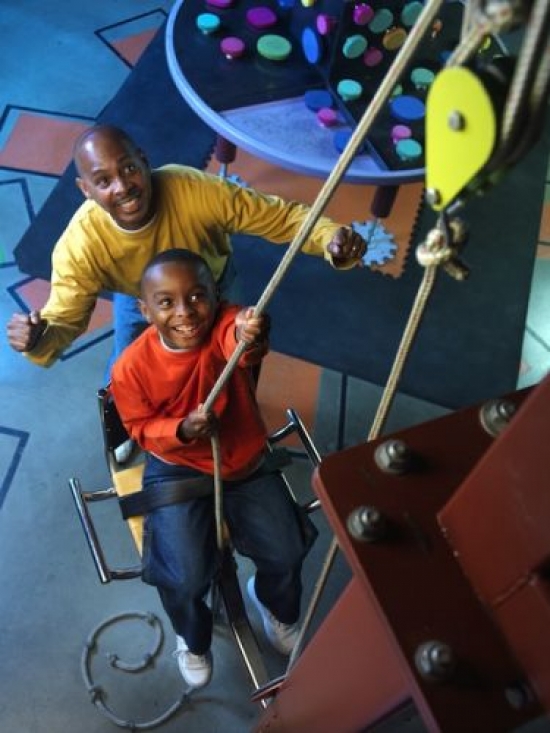
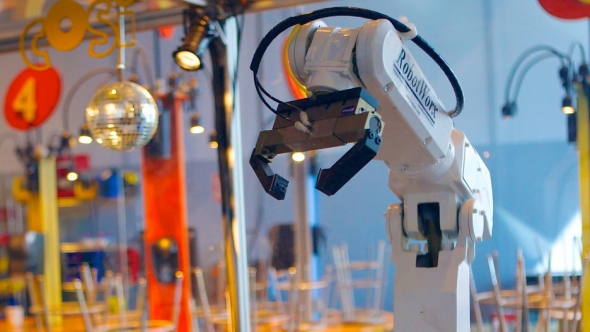
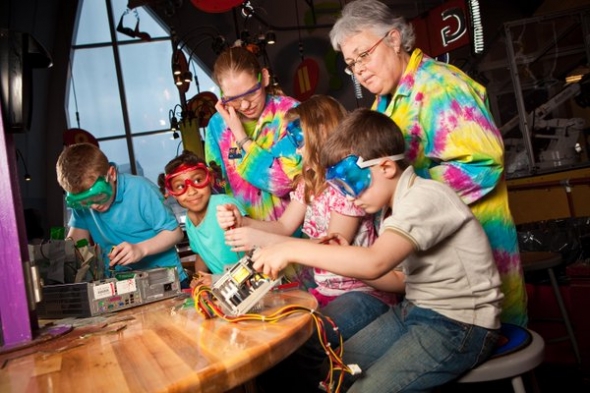

Comments
Hello, my name is Rebekah and I am a senior in high school and I live in Ohio and I have been to COSI a couple of times and it was totally worth it!(the money and the trip) I always find something new to look at or something old that I liked from the last time! But my all time Favorite is the one hall way that is called Progress. Lastly to whom ever wrote this Page about COSI thank you so much!
-Rebekah
Columbus is actually about two and a half hours from Cedar Point
Columbus is actually about two and a half hours from Cedar Point
COSI just isn't an affordable family option. Its much more expensive than the zoo and the Family Friday Nights are full of riff raff and trouble. Not really very family friendly.
COSI is amazing I went as a kid (I'm from wv and everything cool was in Ohio or PA for us) and also took my children last summer. It is far from is now since we love in NC but so worth it. Very fun and educational!